Situated in South-West Nepal, Bardia National Park is part of that wide and wild Terai, the lowland belt between India and Nepal, rich of grasslands, savannas, forests and swamps. Bardia offers an authentic experience of local life and culture, Tharu people are the main ethnic group in the region, and great opportunities for thrilling jungle activities.
It’s the only place in the world where you can go on walking safaris in a jungle with a population of some 70 tigers, all living in a relatively small area of about 1,000 square Km. At the same time, the incredible wildlife of the Park is still not used to the presence of human beings staring at them from jeeps. In Bardia, going out in the jungle and trying to see animals is a real adventure “old style”!
HOW TO GET THERE
In order to reach the outskirt of Bardia National Park you’ll need to get to a Tharu village called Thakurdwara.
It’s possible to fly to Nepalgunj from Kathmandu or Pokhara, and from there it’s about two hours by bus to get to Ambasa. Once in Ambasa, where there’s nothing really, you’ll need to take a rickshaw (300NPR / €2,5), normally waiting at the crossroad that leads to Thakurdwara, 14 Km further South, or you can organise transportation bbeforehandwith your lodge.
It’s also possible to take a bus anywhere along the road that goes East-West. It’s going to be a long ride though. From Kathmandu or Pokhara it’s about 15 hours (1,200NPR / €9,5), normally leaving in the afternoon and arriving in Ambasa early in the morning. Getting the bus from local bus stations is quite an experience itself, as the stations are not really stations, buses just park along side a busy and dusty road. It’s impossible to understand which one goes where. Just ask around and locals will point you towards the right bus for your ticket.
In the off chance that you are traveling West to East, therefore coming from the Indian border in Mahendrenagar, the bus would reach Ambassa in about 4 hours on the same road. It’s of course also possible to reach Bardia from one of the southern borders with India, if you are coming from there, or with your own means of transportation. The roads are bumpy, it’s Nepal after all, but quite ok.
WHEN TO GET THERE
The best season in terms of weather conditions and wildlife watching is October-November, and March to May. If you can handle the heat and humidity, which might rise up to 45 C, the pre and post monsoon season is very interesting (May, little bit of June, and September) as animals do hang out in the river waters for longer periods of time during the day, which makes it easier to see them. Definitely a good time to see tigers.
WHERE TO STAY AND COSTS
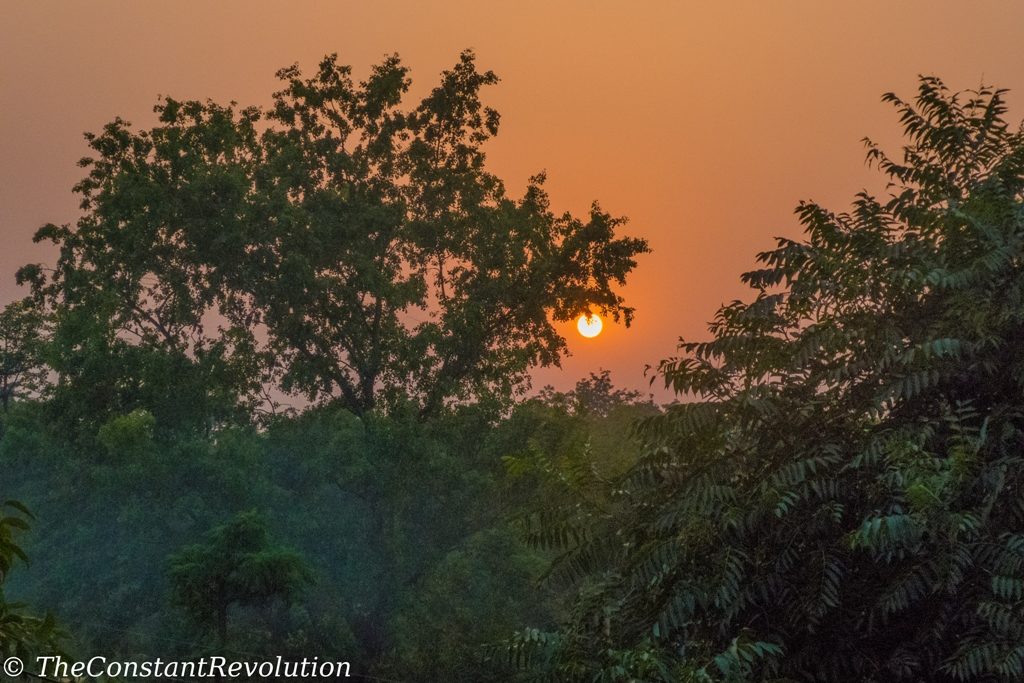 There’s about 25 lodges in Thakurdwara. As far as I know only one is very expensive, like around €350 per night, but it should include jungle activities. As for the rest, they offer about the same level of comfort. Some have bigger rooms, more space and nice gardens, for more privacy and relax. Some are more basic.
There’s about 25 lodges in Thakurdwara. As far as I know only one is very expensive, like around €350 per night, but it should include jungle activities. As for the rest, they offer about the same level of comfort. Some have bigger rooms, more space and nice gardens, for more privacy and relax. Some are more basic.
This is what makes the difference in costs for the accommodation, which varies depending on the season and whether or not breakfast is included. It might range from about €4 per night up to €20/25. In any case, expect to see ants, spiders, gekos and what not wondering around the room, which could be quite entertaining. Electricity works only partially, with frequent black outs, in the whole town, which means the internet is not always available and the shower can be cold. But hey, it’s all part of the jungle experience 😉
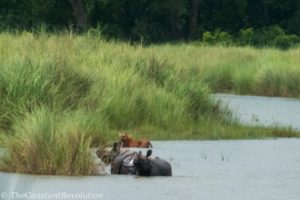 I have stayed at Wild Trak Adventure, where I have volunteered for a while. Wild Trak is owned by John Parshatt, the only foreigner with a business in the area. John is a zoologist with a real passion for wildlife, which he could talk about forever, providing plenty of information about small insects as well as birds, snakes and of course mammals. He explored several jungles around the world, becoming an experienced guide, before deciding to settle down close to Bardia National Park, in his opinion the ultimate jungle when it comes to wildlife watching opportunities. The place stands up to its name, as John offers all the regular jungle activities (see below), but also something for the more adventurous, like multi-days camping and trekking tours in the Park, or in unfrequented areas of West Nepali mountains.
I have stayed at Wild Trak Adventure, where I have volunteered for a while. Wild Trak is owned by John Parshatt, the only foreigner with a business in the area. John is a zoologist with a real passion for wildlife, which he could talk about forever, providing plenty of information about small insects as well as birds, snakes and of course mammals. He explored several jungles around the world, becoming an experienced guide, before deciding to settle down close to Bardia National Park, in his opinion the ultimate jungle when it comes to wildlife watching opportunities. The place stands up to its name, as John offers all the regular jungle activities (see below), but also something for the more adventurous, like multi-days camping and trekking tours in the Park, or in unfrequented areas of West Nepali mountains.
JUNGLE ACTIVITIES AND COSTS
The most common jungle activities are daily walking safaris, jeep safaris, and rafting safaris along the Karnali river. All of them start early in the morning and stay out all day, basically until the Park closes its doors. Night activities are not allowed. The costs includes lunch packs and the entry fee to the park, which is 1,000 NPR (€8) per person, per day.
An official guide must always accompany guests. This aside, the costs vary depending on the number of people on the tour, which sort of makes sense, but also from lodge to lodge, or from guide to guide. However, in general the cheapest tour would be a walking safari, which would amount to 4,000/5,000 NPR (€30/40) per person. But as I said, there might be some guides that ask for less.
The issue here is that it isn’t possible to find information before hand about the quality of the guides, at least I didn’t manage to find any. I barely managed to find how to get there on the internet. At the same time, there’s a great deal of “protectiveness” by the lodges about their clients. The general feeling is that businesses try to push clients to stick to the lodge, eat and drink at the lodge, do activities with the lodge, and don’t ask questions around, which is sort of understandable, but a little annoying. Consequently, it’s really hard to try and compare different tours, or guides, or even prices unless talking with other tourists, or come back from time to time and choose a different accommodation.
All information I can provide in this sense is my experience with John and Deep, the local guides who took me on a great tiger tracking adventure.
THE JUNGLE EXPERIENCE IN BARDIA
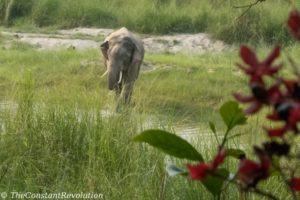 The jungle experience in Bardia National Park is unique in the world. There are other places where you can go walking in a jungle. I did it myself in Laos, and I am thinking Amazon, just to give two examples. However, in Laos there is almost no mammals, and the Amazon is so big, and so thick, that seeing actually something is extremely hard. Bardia is different: the Park is not extremely big, and its rich in wildlife, a combination that provides incredible opportunities to spot big mammals like the Bengal tiger, the Leopard, the Asian elephant, the one horned rhino, and much more.
The jungle experience in Bardia National Park is unique in the world. There are other places where you can go walking in a jungle. I did it myself in Laos, and I am thinking Amazon, just to give two examples. However, in Laos there is almost no mammals, and the Amazon is so big, and so thick, that seeing actually something is extremely hard. Bardia is different: the Park is not extremely big, and its rich in wildlife, a combination that provides incredible opportunities to spot big mammals like the Bengal tiger, the Leopard, the Asian elephant, the one horned rhino, and much more.
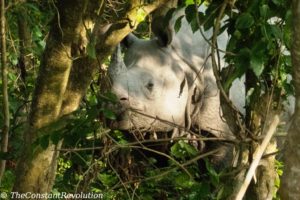 Furthermore, Bardia National Park offers an authentic experience of jungle safari. Here animals are really wild, unaccustomed to the presence of human beings, from whom they normally flee, if left unprovoked and observed from a safe distance. Few accidents have occurred over years, but really exceptions, and no casualties. I read on the internet about the attack on the Dutch tourist from a tiger, and I met Krishna, the local guide who was accompanying him. Krishna is the one who actually was physically attacked; he’s got a pretty big scar on his left leg. However, he explained to me it’s an extremely rare occurrence, and only because the tiger, a female, had cubs with her, and she felt threatened by their presence. He doesn’t hold a grudge to her, that’s how animals behave to protect themselves.
Furthermore, Bardia National Park offers an authentic experience of jungle safari. Here animals are really wild, unaccustomed to the presence of human beings, from whom they normally flee, if left unprovoked and observed from a safe distance. Few accidents have occurred over years, but really exceptions, and no casualties. I read on the internet about the attack on the Dutch tourist from a tiger, and I met Krishna, the local guide who was accompanying him. Krishna is the one who actually was physically attacked; he’s got a pretty big scar on his left leg. However, he explained to me it’s an extremely rare occurrence, and only because the tiger, a female, had cubs with her, and she felt threatened by their presence. He doesn’t hold a grudge to her, that’s how animals behave to protect themselves.
To go out looking for wildlife has a taste of old times in Bardia. It’s a little like reading a book written by Corbett, or Anderson, when the hunter had to walk and sweat, try to make the environment unaware of his presence, follow footprints, hide and patiently wait for the animal to show up. At that time to shoot it with rifles, today only with a camera, luckily. It’s a waiting game in harsh conditions, and it isn’t easy nor granted to see the big mammals, but highly gratifying when it happens. It requires a good guide, someone with the skills and knowledge about the sounds and signals of the jungle, in order to tell when something is moving, even though you are surrounded by apparent stillness. It’s a thrilling experience.
Also for the jeep safaris, or rafting, the means of transportation is only used to reach certain areas of the Park, which would be otherwise too far to reach by foot, unless going on a multi-day camping tour. But even so, in order to get to the observation spots, everyone has to walk, then be still, and quietly wait.
BARDIA NATIONAL PARK WILDLIFE INFORMATION
It goes without saying, this can’t be a complete guide to Bardia National Park wildlife, that would take a full book. I’ll just point out the highlights, in my opinion that is. 🙂
Several species of snakes, lizards, and fish have been found in the park’s forest, grasslands and rivers habitat. I myself saw from very close a rare, and beautifully coloured Banded Krait, a night at the lodge, and a Burmese Python, a small one, about 2 m, but they can reach up to 7 m in length and weight 90 Kg.
A special mention must go to the Gengetic River Dolphin, very rare, there’s an estimated population in the Karnali river of 60 Dolphins, not necessarily inside the Park, and in the Ganges river of about 600, while there should be about 2,500 left worldwide. I was lucky and saw few of them, nice spectacle, and only few guides know where to find them. They aren’t the only big inhabitant of the river though, they have good company with the Golden Masheer, a type of carp that can reach up to 80 Kg, and giant catfish called the Goonch, similar in size, not to forget Crocodiles, which grow up to 4 m long.
There’s also more than 400 species of birds around Bardia, which I can’t name one by one, but many are easy to see, and to listen to: they produce the most graceful sounds, especially in the mornings. Worth mentioning the Great Hornbill, and the Grey Headed Fish Eagle. I have a particular liking for the Wood Pecker. I saw one, from afar, really nice. I would love to see is a Great Slaty Woodpecker 🙂
Finally, there’s about 40 species of mammals. Here’s a list of the most want to see species:
√ The Bengal Tiger, about 70 in the park. See A Day Tracking Tigers for more info. Bardia is probably the easiest place in the world to see a real wild tiger in its environment. The king of the jungle!
√ The Leopard, hard to say how many, for sure more than tigers, although they are harder to see. The elusive one!
√ The Asian Elephant, the most dangerous and aggressive animal in the area. They actually roam freely between other regions, and India. Sometimes they attack villages and make victims. Better watch from a safe distance, and if they come for you, back off. The not so kind giant!
√ The One Horned Rhino, 35 in total in the park, some taken from Chitwan to try and increase their population. Beautiful animal! I saw some from very close and some others fleeing from tigers full speed. The quick one when it needs to be!
√ Five type of deer, in order of size from the smallest to the biggest: the Barking dear, the Hog Dear, the Spotted Deer, the Sambar Deer, and the Swamp Deer. There’s quite a big population of these elegant animals, and they are relatively easy to see. The lifeblood of Bardia!
√ The Sloth Bear, not easy to see, and when you do, they might be aggressive. But they are there.. somewhere. The black ghost!
√ The Pangolin, what can I say: how cool would be to see a freaking Pangolin!? Unfortunately, not easy at all, but one never knows. The legend of P!
√ Striped Hyenas, Leopard Cats, Fishing Cats, Jungle Cats, Jackals… they are all there with some other felines and canines. The night crawlers!
√ Langur Monkey and Macaque, both quite easy to see, they’re the first to flee at danger, from the high branches of the trees where they reside. They are also the ones, along with deer, to give signals about the presence of predators, for those who know how to listen to this type of conversation. 😉 The constant protectors!
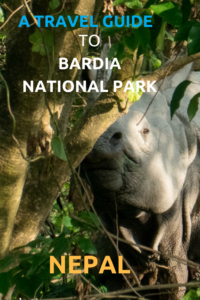
Viva the transparency! There are affiliate links in this article. This means if you click on a link and end up buying (or booking) through those websites, I’ll get a small commission, at no extra cost to you. This helps me maintain the blog, and continue to provide (hopefully) useful travel information. I advertise only products I have tested and sites I use myself!
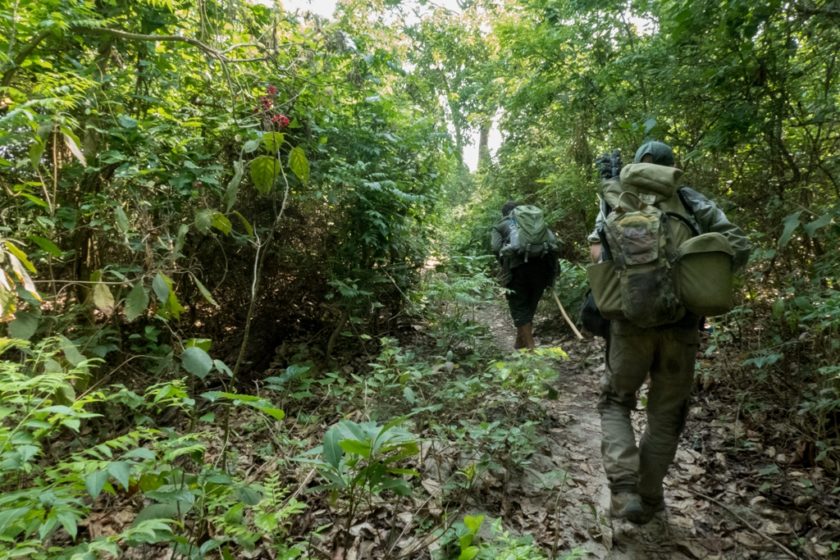
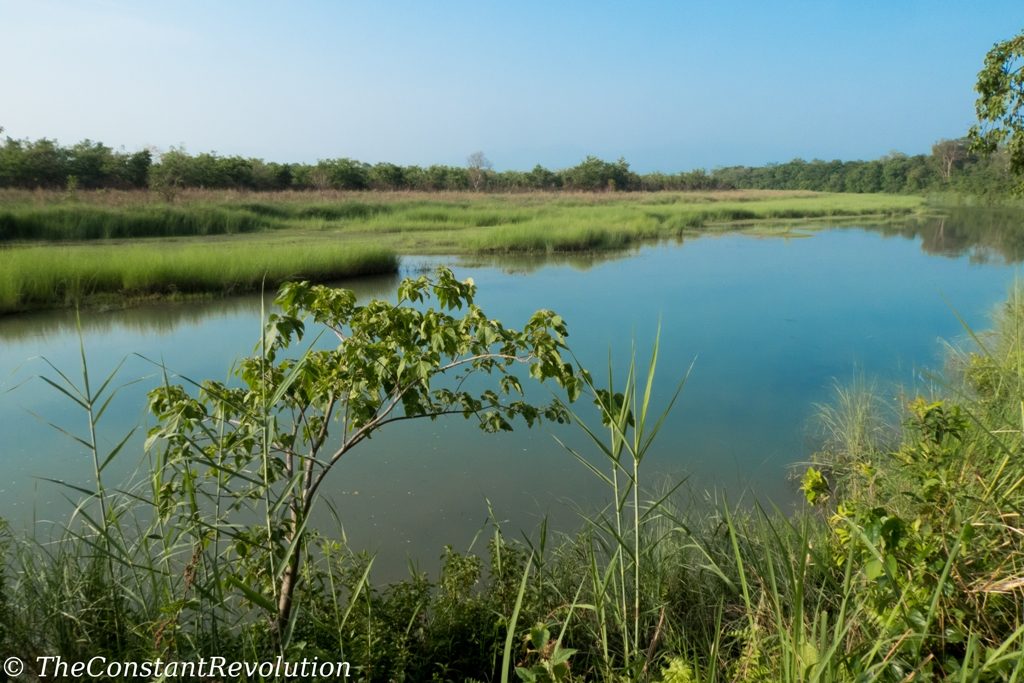
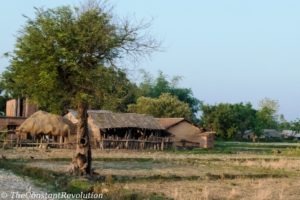
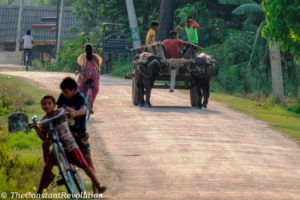
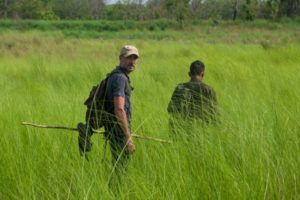
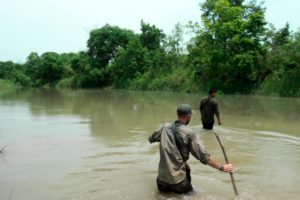
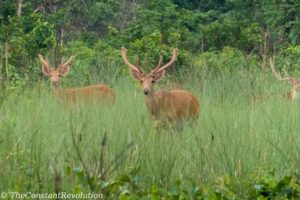
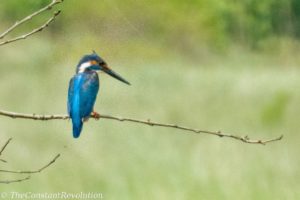
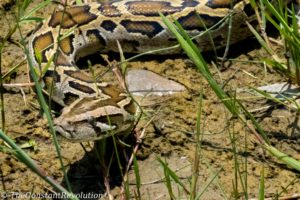
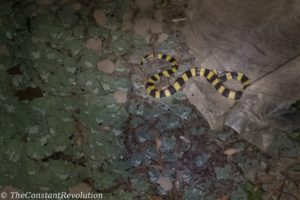
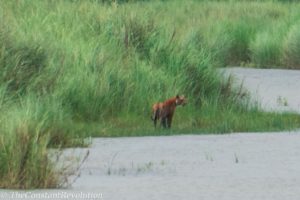
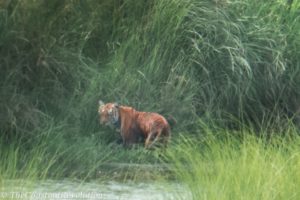
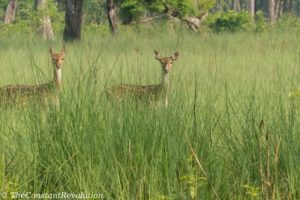
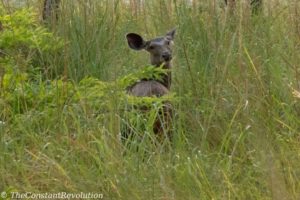
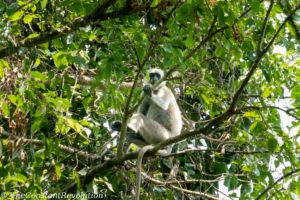
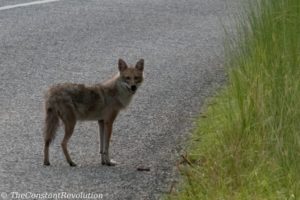
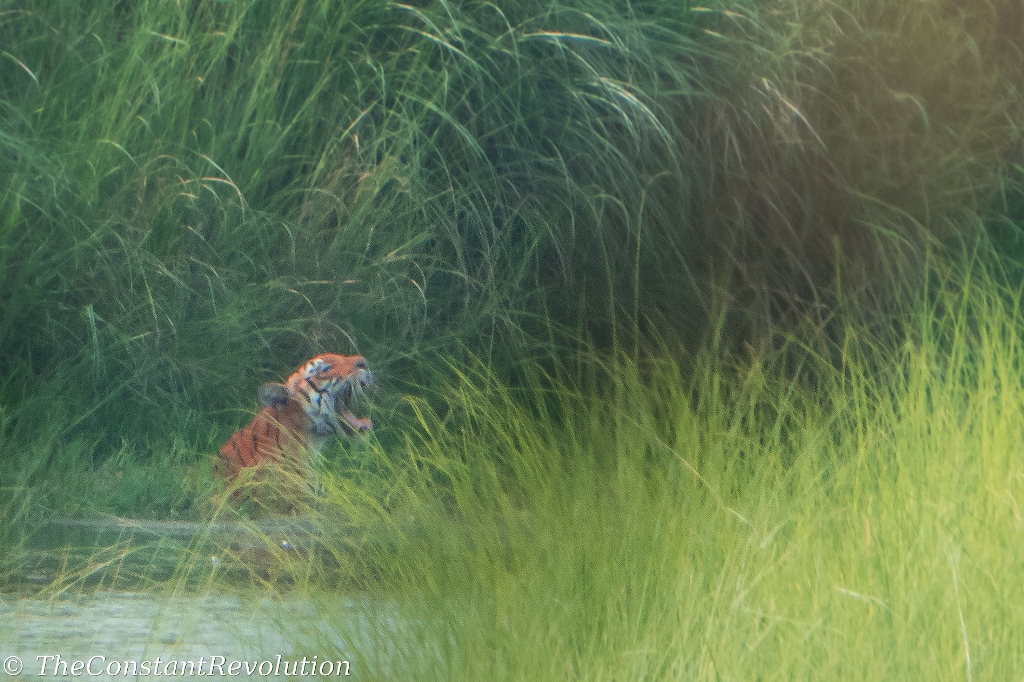
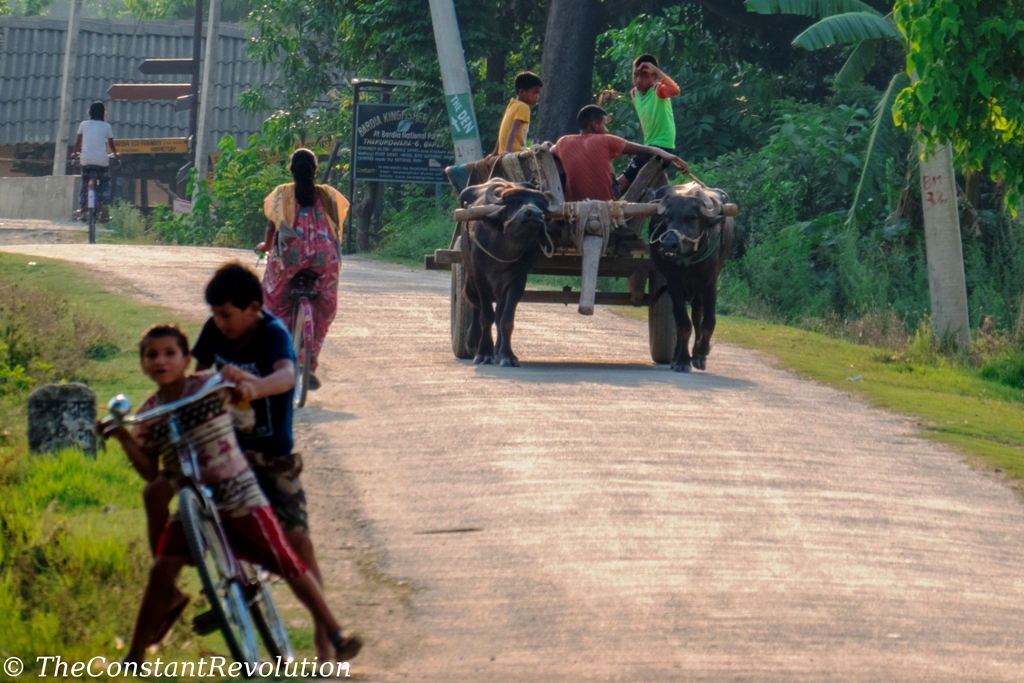
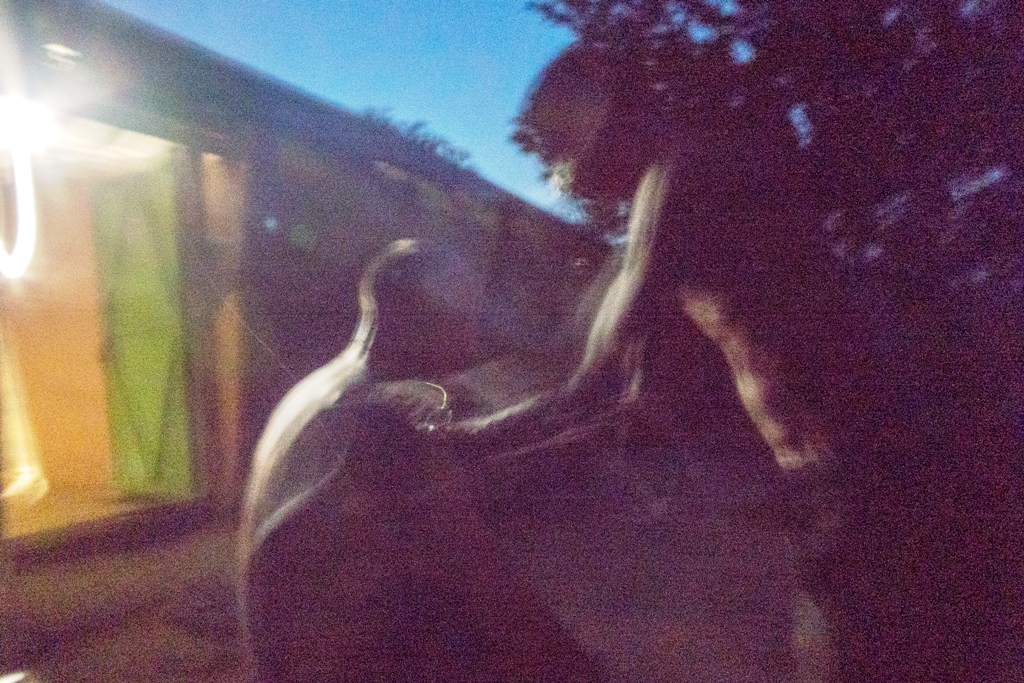
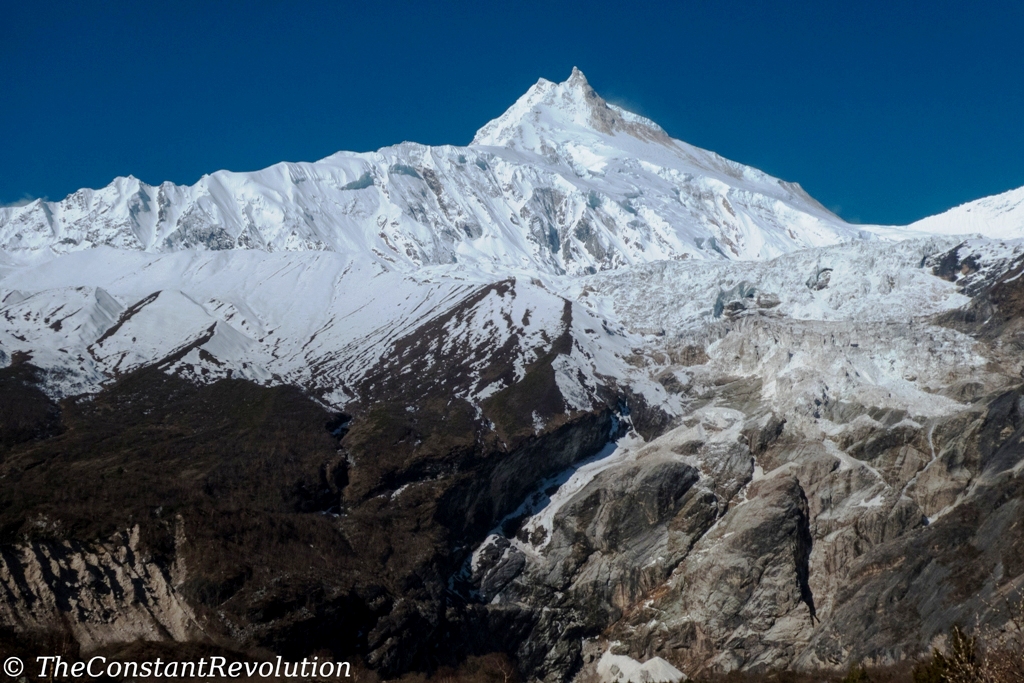
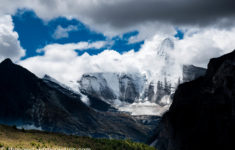

Looks amazing! Great article
I’ve always been interested in volunteering in Bardia! I was wondering about Wild Trak and your volunteer experience with them went
Hi, everything was fine during my time there, they needed a hand with some work in the garden. However, as long as I know, wild trak does not accept volunteers regularly. Best thing to do is to send an email to John and ask 😉